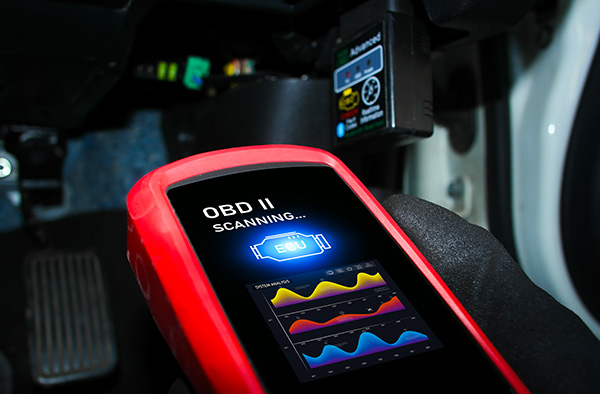
While driving, nothing is more concerning than seeing the check engine light suddenly illuminate on your dashboard. It’s a signal that your vehicle’s onboard diagnostics (OBD) system has detected a potential issue. But how does this diagnostic process actually work? Let’s look into the mechanics behind the check engine light and how it helps identify problems in your car.
Тhe Check Engine Light
The check engine light, often represented by an engine icon or the words “Check Engine,” serves as an early warning system for your vehicle’s onboard diagnostics (OBD) system.
Triggering Factors
Several factors can trigger the check engine light, including:
- Engine Misfire: A misfiring engine due to faulty ignition components or fuel system issues.
- Emissions Problems: Issues with the exhaust system or emission control components.
- Sensor Malfunction: Failure or malfunction of sensors such as oxygen sensors (O2 sensors) or mass airflow sensors (MAF sensors).
- Loose Gas Cap: A loose or faulty gas cap can cause a check engine light to illuminate.
OBD System Overview
Behind the scenes, the OBD system continuously monitors various parameters and sensors within your vehicle.
Diagnostic Trouble Codes (DTCs)
When the check engine light comes on, the OBD system generates Diagnostic Trouble Codes (DTCs). These codes provide specific information about the problem detected.
OBD-II Standard
Most vehicles manufactured after 1996 adhere to the OBD-II standard, which ensures uniformity in diagnostic procedures and codes across different vehicle brands.
Steps in Check Engine Light Diagnosis
Diagnosing the cause behind a check engine light involves a systematic approach.
Scanning the Vehicle
A diagnostic scan tool is used to retrieve DTCs stored in the vehicle’s computer system. These codes indicate the nature and location of the problem.
Interpreting DTCs
Each DTC corresponds to a specific issue detected by the OBD system. Technicians use service manuals and databases to interpret these codes accurately.
Common Causes of Check Engine Light
Several common issues can trigger the check engine light.
Sensor Failures
Faulty sensors, such as oxygen sensors (O2 sensors) or mass airflow sensors (MAF sensors), can lead to inaccurate readings and trigger the check engine light.
Catalytic Converter Issues
A failing catalytic converter can trigger emissions-related DTCs and illuminate the check engine light.
Importance of Timely Diagnosis and Repair
Prompt action is crucial when the check engine light comes on.
Preventing Further Damage
Addressing the underlying issue promptly can prevent further damage to engine components and ensure optimal vehicle performance.
Passing Emissions Tests
A properly functioning emission control system, indicated by a functioning check engine light system, ensures your vehicle meets emissions standards.
Is your check engine light on? Don’t ignore it—visit Auto Excel for expert diagnostics and repairs. Contact us today to schedule your appointment and ensure your vehicle runs smoothly.

